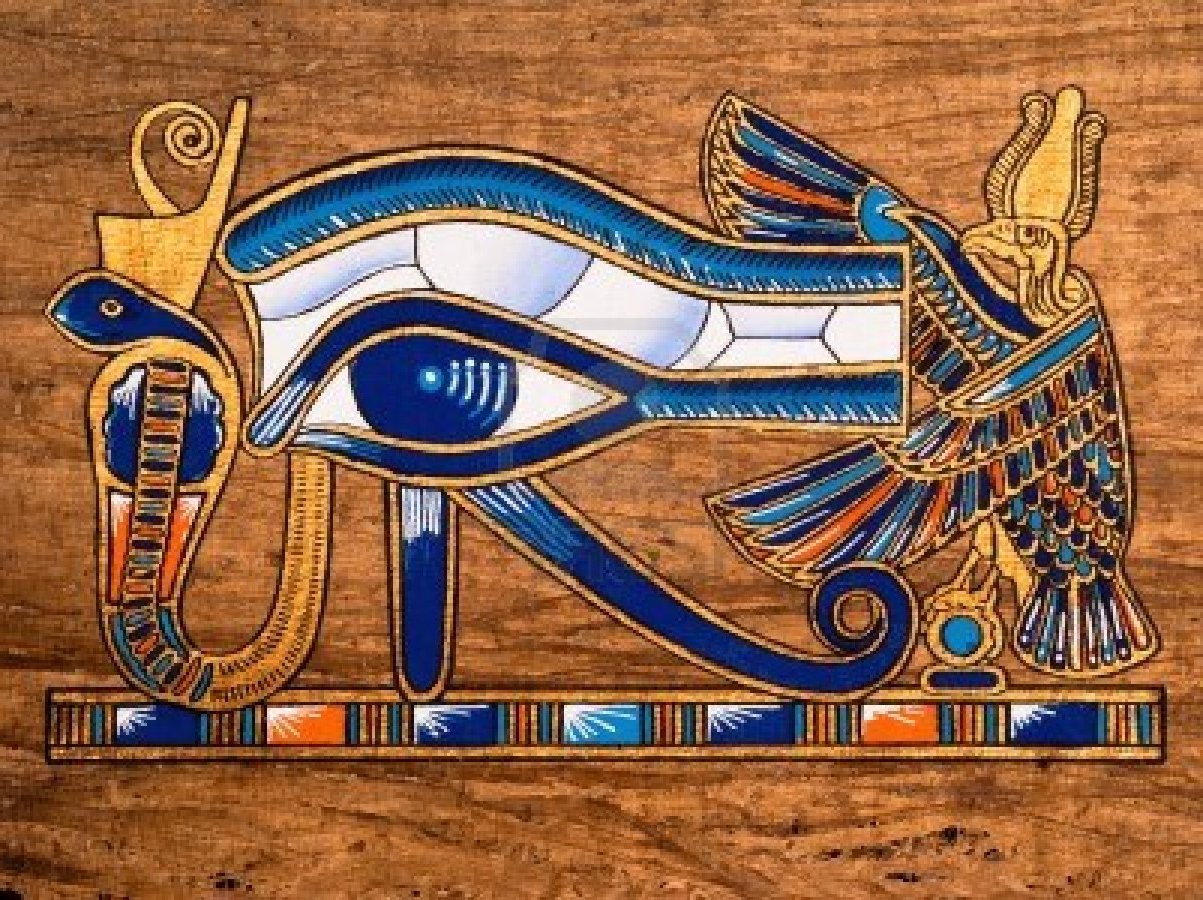World religion: Eye of Horus, an ancient Egyptian symbol
Subsequently, next to the ankh symbol, the icon commonly called Eye of Horus is the next best known. It consists of a stylized eye and eyebrow. Two lines extend from the bottom of the eye, probably to imitate facial signs on a local hawk in Egypt, since the symbol of Horus was a hawk.
In fact, three different names are applied to this symbol: the eye of Horus, the eye of Ra and the Wadjet. These names are based on the meaning behind the symbol, not specifically on its construction. Without any context, it is impossible to definitively determine which symbol is meant.
The eye of Horus
Horus is the son of Osiris and grandson of Set. After Set killed Osiris, Horus and his mother Isis went to work to put Osiris back together and revive him as lord of the underworld. According to one story, Horus sacrificed one of his eyes for Osiris. In another story, Horus loses his sight in a subsequent battle with Set. As such, the symbol is connected with healing and restoration.
The symbol is also of protection and was commonly used in protective amulets worn by both the living and the dead.
The eye of Horus commonly, but not always. sports a blue iris. The eye of Horus is the most common use of the eye symbol.
The eye of Ra
The Eye of Ra has anthropomorphic qualities and is sometimes also called the daughter of Ra. Ra looks up for information and distributes anger and revenge against those who have insulted him. Hence, it is a much more aggressive symbol than the eye of Horus.
The eye is also given to a variety of goddesses like Sekhmet, Wadjet and Bast. Sekhmet once launched such ferocity against a disrespectful humanity that Ra eventually had to intervene to prevent her from exterminating the entire race.
Ra's eye commonly sports a red iris.
As if this were not complicated enough, the concept of Eye of Ra is often represented entirely by another symbol, a cobra wrapped on a solar disk, which often hovers above the head of a divinity: very often Ra. The cobra is a symbol of the goddess Wadjet, which has its connections with the eye symbol.
wadjet
Wadjet is a cobra goddess and the patron of the lower Eygpt. Ra's depictions usually sport a solar disc over his head and a cobra wrapped around the disc. That cobra is Wadjet, a protective deity. An eye shown in association with a cobra is usually Wadjet, although it is sometimes an eye of Ra.
Just to further confuse, the Eye of Horus is sometimes called the eye of Wadjet.
Pair of eyes
A pair of eyes are located on the side of some coffins. The usual interpretation is that they provide sight to the dead since their souls live for eternity.
Orientation of the eyes
While various sources attempt to attribute meaning to the representation of the right or left eye, no rules can be universally applied. The eye symbols associated with Horus can be found in both left and right forms, for example.
Modern use
People today attach a number of meanings to the eye of Horus, including protection, wisdom and revelation. It is often associated with the Eye of Providence found on 1 USD banknotes and in the iconography of Freemasonry. However, it is problematic to compare the meanings of these symbols beyond the spectators who are under the watchful eye of a higher power.
The eye of Horus is used by some occultists, including Thelemites, who consider 1904 the beginning of the Age of Horus. The eye is often depicted within a triangle, which could be interpreted as a symbol of elemental fire or could recall the Eye of Providence and other similar symbols.
Conspiracy theorists often see the eye of Horus, the eye of Providence and other eye symbols as all ultimately the same symbol. This symbol is that of the dark Illuminati organization which some believe to be the real power behind many governments today. As such, these ocular symbols represent subjugation, knowledge control, illusion, manipulation and power.
